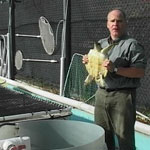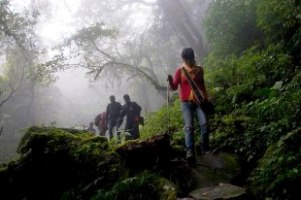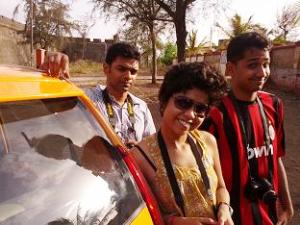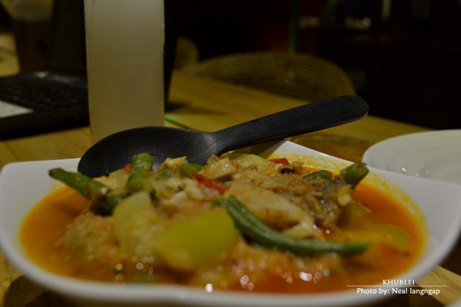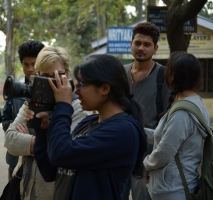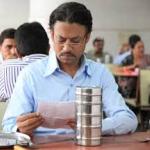Not all is calm in Assam’s Kamrup district. Weavers’ community did what was only expected of them: protested the influx and use of artificial silk that’s evidently spoiling their market. Following cannons of rubber bullets and lathi-charges is a 12-hour bandh that’s stealing all the tranquillity.
Manipur, which angry residents nicknamed as ‘Bandhpur’ saw another 48-hour national highway ‘total blockade’ from the midnight of March 27. What sparked off this was the kidnapping of a nine-grader student by suspected outlawed group, Revolutionary People’s Party, early March. The blockade was called by the All Zeliangrong Students Union (a student group of a Naga community) of Assam, Manipur, Nagaland (AZSU-AMN), Zeliangrong Youth Front (ZYF-AMN) and Zeliangrong Students Union, Manipur (ZSUM) who are demanding the safe release of the kidnapped. Such bandhs, however, are nothing new in this state, that saw one of the longest economic blockades that spanned over 100 days in 2011.
In the light of this and more, the need for peace and harmony in the Northeast has never been so desperate as today. The manners in which, we have flirted with peace have ensured that peace is but a fleeting state of existence. In the absence of peace, our growth is restricted by lethargy, complacency and our over dependence on largesse dispensed by the centre. Today’s Northeast does promise a big story of positivity that’s emerging out from every corner. However, complacency and our inability to build lasting peace may rob us of this chance to tell our big story. Peace is the most important ingredient for the way ahead. It’s a prerequisite for the prevalence of development, growth and prosperity. Unless a collective realisation for peace dawns on the people, no sector in the region will truly grow the way it should and must.
If we look at just one sector, tourism, for instance, it may be the most promising one but it has not quite lived up to the figure it should be boasting by now. Tourism has emerged as one of the prospective sectors of industry in the Northeast and the future economic development of the region will be greatly influenced by the economic opportunities arising out of tourism growth. Yet, there are road blocks that, to me, are self-inflicted or designed out of sheer folly rather than accidental. There is a fear factor ruling the minds of potential tourists who look at the region as terror-infested spots where no man would dare to travel. Our friends from the mainland maybe besotted by the natural beauty, but something will always stop them from planning a trip there, unless, we gain their confidence. They may go solo to cruise on the backwaters of Kerala or party at the beaches of Goa, but they will always reconsider their plans to venture into the ‘unknown’ that is Northeast.
There is a perception built and formed around the places in the Northeast which is partly because of the many recurring incidents and partly due to lack of proper understanding by the people in India at large. In many ways, it is also because of the way we have flirted with peace in our own wicked ways.
Northeast India occupies truly unique tourism resources that can equate the destination to many preferred locales of South East Asia. Despite its rich tourism attraction offering a wide spectrum: nature, culture, wild life, heritage, spirituality, and diversity, it is strangely lagging behind in tourism. The entire region accounts to 7.9 per cent of India’s geographical area and it attracts only 0.9 per cent of domestic tourists and 0.3 per cent of international tourists to India. The main concentration of foreign tourists within the Northeast region is in Sikkim and Assam.
If projected well, there’s no reason why tourists wouldn’t love to holiday in this part of our country. But why has it not taken off? We have one of the world’s renowned wildlife sanctuaries in Kaziranga. By that token, tourists should be flocking to see the one-horned rhino? Or, for that matter, many other attractions in other states should be receiving visitors year after year. The fact that we have so much to show that are so close in nature to those found in other South East Asian countries suggests that something is quite a miss. If in Indonesia’s Yogyakarta, tourists get up at the crack of dawn to see sunrise at the Borobudur temple, they would marvel at the thought of praying in Sikkim’s 16th century Rumtek monastery built by the 9th Karmapa Wangchuk Dorje. The thrill of Chiang Mai’s mountainous region in the north of Thailand can equate the thrill of being in any of the virgin mountainous part of Mizoram or Nagaland. For that matter, Manipur’s Shiroy Lily which is the rarest flower in the world given that it blooms only once a year should be tourists’ delight. Majuli Island can be the new hot spots for many eco-tourism experiences if authorities smarten up the accommodation and promote well. Similarly, if we look at the possibilities and opportunities, to me, there are plenty. Our’s is a culturally rich region. If we have the vision and the right attitude, what could stop us from promoting our home-grown festivals like the Sangai festival in Manipur, orange festival in Tamenglong district of Manipur; Hornbill festival in Nagaland, Bihu festival in Assam, Anthurium festival in Mizoram, Odisha Festival in Tripura, so on and so forth.
Undeniably, there is, what I would call ‘local lethargy’ that ensures nothing works the way it should. There is a tendency to zealously depend on the Centre’s funding to the point of doing nothing until the cash arrives that are only squandered away by people in power. This tendency has worked against us and it will continue to do so until there is proper accountability at every level.
Late last year, at an interesting workshop organised by CII on ‘Making Northeast Tourism Ready’, TATA Consultancy Services (TCS) presented the Tourism master plan for Northeast that brought to light the many possibilities the region could bring for itself if things work with a lot of local enthusiasm. The study also came up with findings and feedback on the need to have more private sectors participation to scale up tourism.
Clearly, local enthusiasm must not be restricted to only being the receiver of cash from the centre, but a vigilant participator who is genuinely keen to see things work for his or her own good.
The unique selling proposition of Northeast, according to the presentation, was framed as ‘experiential tourism’ with a strong eco-culture positioning and the regional branding continuing with ‘Paradise Unexplored’. The findings maintained the need for creating critical infrastructure development, particularly connectivity and accommodation which are the essence for tourism development. It suggested more conducive environment and safely which are critical for tourists to feel confident enough to travel; community involvement for sustainable tourism and most importantly more intra region institutional co-operation, among others. Another thing that kept my antenna alert was the proposed investment for the prioritised development of NER tourism development tourism circuit that was estimated at 395935 lakhs or 3959.35 crores with a 10-year tourism development horizon. It’s a big sum but if we only wait for the sum to trickle down and do nothing that we ought to, we will not grow but rot in leisure. Ours’ is to ensure that whatever sum that comes from the centre for development reaches their designated slot. And ours’ is to ensure that we create and built a peaceful environment that’s conducive for inclusive and holistic growth to see us through meaningfully.
Find us on facebook: facebook.com/TheThumbPrintMag









